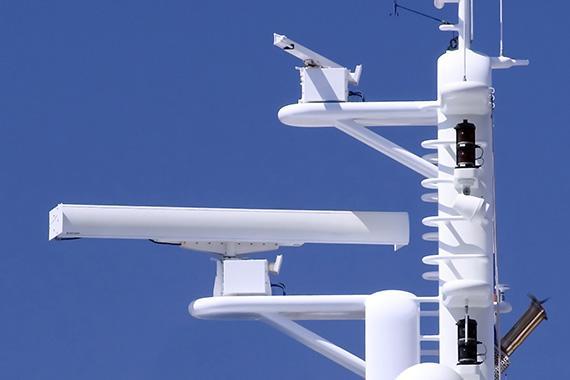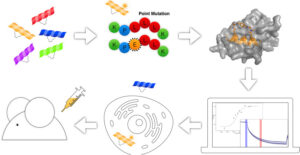Marine radar systems have become essential navigational tools for ships and vessels, providing real-time detection and tracking of objects, weather conditions, and potential hazards in marine environments. The marine radar market has witnessed significant growth in recent years, driven by increasing maritime trade activities, the need for enhanced safety and security measures, and technological advancements in radar systems. This article provides an overview of the marine radar market, key drivers for its growth, and the latest trends shaping the industry.

Market Overview:
The marine radar market encompasses the sales and installation of radar systems specifically designed for maritime applications. These systems utilize radio waves to detect and display the position, range, and movement of objects in and around the vessel, including other ships, landmasses, navigational aids, and weather patterns. Marine radar systems are critical for safe navigation, collision avoidance, and efficient operations at sea.
Key Drivers for Growth:
a. Maritime Trade Expansion: The growth of international trade and the shipping industry has increased the demand for marine radar systems. Ships and vessels rely on radar technology to navigate busy waterways, monitor traffic, and ensure safe passage. The rising volume of maritime trade, coupled with the need for efficient and secure navigation, has fueled the adoption of advanced radar systems.
b. Safety and Collision Avoidance: Safety is a top priority in the maritime sector, and marine radar systems play a vital role in collision avoidance and navigational safety. Radar technology provides early detection of other vessels, obstacles, and navigational hazards, enabling captains and crew to take appropriate action to avoid accidents or collisions.
c. Technological Advancements: The marine radar market has witnessed significant technological advancements, enhancing the performance and capabilities of radar systems. Features such as target tracking, automatic radar plotting aid (ARPA), enhanced radar imaging, and integration with other onboard systems have improved situational awareness and operational efficiency. Additionally, the integration of radar with other advanced technologies like GPS, AIS, and ECDIS (Electronic Chart Display and Information System) has further strengthened the capabilities of marine radar systems.
d. Regulatory Requirements: The International Maritime Organization (IMO) and other regulatory bodies have established guidelines and regulations to ensure the safety and security of vessels and crew. Compliance with these regulations necessitates the installation of reliable radar systems for maritime operations, driving the demand for marine radar solutions.
Latest Trends Shaping the Industry:
a. Solid-State Radar: Solid-state radar technology has gained prominence in the marine radar market. These radar systems use solid-state electronics instead of traditional magnetron-based transmitters, offering advantages such as faster startup time, improved target detection, lower power consumption, and longer lifespan. Solid-state radar systems are also more resistant to harsh marine environments, making them a preferred choice for vessel operators.
b. Doppler Radar: Doppler radar technology is being increasingly integrated into marine radar systems. Doppler radar can detect and track the movement of objects and analyze their velocity relative to the vessel. This capability enables better identification of potential collision risks and helps with weather monitoring, enhancing the safety and efficiency of marine operations.
c. Integration with Advanced Navigation Systems: The integration of marine radar systems with other advanced navigation systems, such as GPS, AIS, and ECDIS, allows for seamless data sharing and enhanced situational awareness. This integration enables captains and crew to have a comprehensive view of the vessel’s surroundings, including real-time position information of other vessels, electronic chart display, and automatic identification of ships.
d. Digital Signal Processing (DSP): Digital signal processing technology is being widely employed in marine radar systems to improve target detection and reduce false alarms. DSP algorithms can filter out unwanted signals, enhance image quality, and provide better target discrimination, ensuring accurate and reliable radar data.
Regional Outlook:
The marine radar market is influenced by regional factors such as maritime trade activities, government regulations, and investments in port infrastructure. Major regions contributing to the market growth include North America, Europe, Asia Pacific, and the Middle East. Asia Pacific is anticipated to witness substantial growth due to increasing maritime trade and investments in the development of ports and coastal infrastructure.
Competitive Players
In the global market, there exist several key competitive players, and many others. The global Marine Radar Market report provides a comprehensive analysis of market players, including their key strategies, SWOT analysis, business expansion, and financial performance. The report is meticulously crafted to provide in-depth information about the market and its players. The report highlights the leading players in the market, taking into account their research expenditure, business segments, product offerings, and overall revenue. Further, the report also incorporates precise vision into the market with the use of analytical tools such as supply chain analysis and Porters five forces analysis.
Browse Press Release – https://www.zionmarketresearch.com/sample/marine-radar-market
Some of the Major Marine Radar Market Players Are:
Lockheed Martin, Furuno, Northrop Grumman, Saab, Raytheon, Japan Radio, Bae, Johnson, Alphatron Marine, Garmin, Wartsila Sam, Rigil Marine, FURUNO ELECTRIC CO. LTD., Japan Radio Co., Raymarine, Easat Radar Systems Limited
Segmentation
The report on the global Marine Radar Market includes a set of segments and its sub-segments assembled by its detailed analysis. The segments are created by considering the demand and supply side of the market. Every segment of the market is represented along with its market revenue and share for the base year as well as over the forecast period.
The in-depth analysis of the report on the global Marine Radar Market is crafted precisely by the research analyst of Zion Market Research. Large manufacturers, startups, equity firms, suppliers, and retailers can avail benefits of the report. By analysing statistical perceptions, users can gain a deeper understanding of market trends, key factors, and potential areas for improvement. This information can help businesses make informed decisions and stay ahead of the competition.
Market Segmentation
By Product –
X-Band And S-Band
By Application –
Fishing Vessel, Recreational Boat, Merchant Marine, And Others
By Regional Analysis
- North America ( United States)
- Europe ( Germany, France, UK)
- Asia-Pacific ( China, Japan, India)
- Latin America ( Brazil)
- The Middle East & Africa
Visit Our Website: https://www.zionmarketresearch.com




